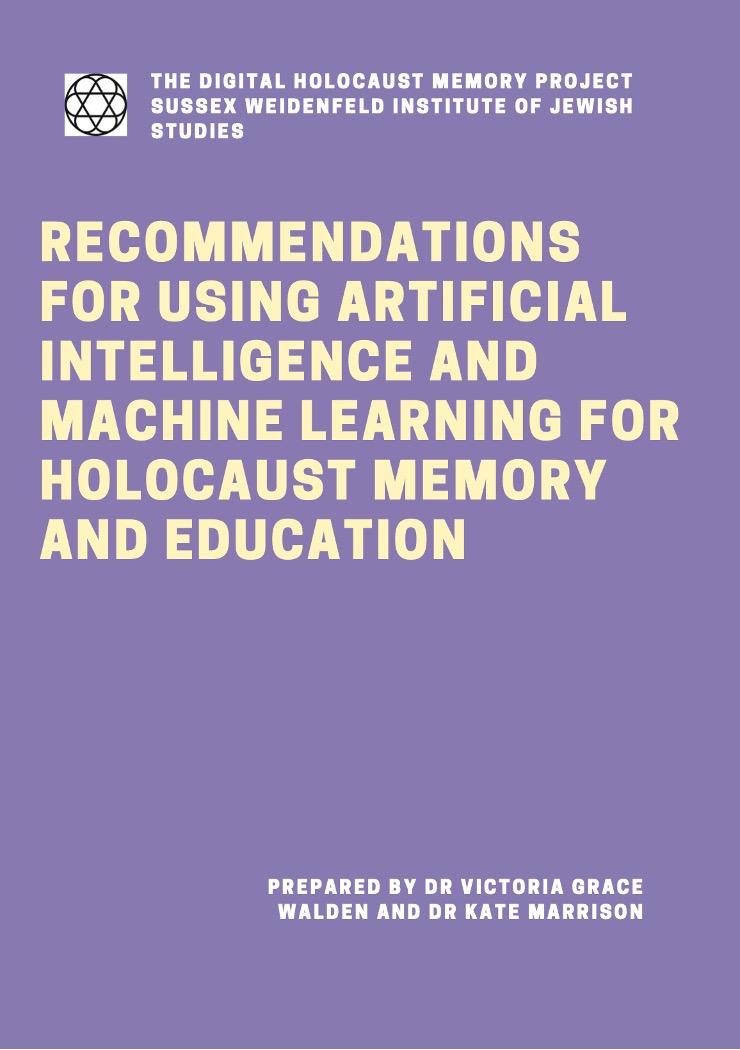
Recommendations for using Artificial Intelligence and Machine Learning for Holocaust Memory and Education
The recommendation reports, published as part of the Digital Holocaust Memory Project, underpin the objectives of the Landecker Digital Memory Lab. Their findings feed into all of the work that we now do.
Forward
The majority of academic research that offers commentary on digital Holocaust projects tends to focus on what is seen by users at the interface. For example, the simulation of human-to-human dialogue in interactive biography projects or avatars in Second Life. Far less attention has been given to the invisible processes that inform what data is retrieved by the user.
Artificial intelligence and machine learning already impact Holocaust education and memory, although their influence is more predominant in public online spaces – such as search engines – than within the work of professional institutions dedicated to teaching about and commemorating this past.
- How might Holocaust organisations harness the possibilities of these technologies for ‘good’?
- What challenges do they need to navigate to achieve this?
- What support do they need, and from whom, to manage this substantial task?
Holocaust education and memory developed within and alongside the so-called broadcast era of seemingly fixed, closed texts. Once a novel is published or a film released, the production process is over. However, digital Holocaust education and memory are complex, iterative processes which never cease to be in development – not just at a project or ‘text’ level, but as an ever-expanding network of potentially connected assets (cohesive ‘texts’ are no longer the best way to conceptualise such work). For those familiar with scholarship in memory studies or Holocaust studies, the idea of our relationship with the past being visualised or experienced as so complex will not be new. Indeed, in parallel is the complexity of the Holocaust as a historical event lived or encountered by so many different people with such diverse experiences, often considered so overwhelming for humans to comprehend so we seek to simplify it in order to teach it. Artificial intelligence (AI) and machine learning might offer alternatives to such existing practice by enabling a vast range of possible entrance and exit points, as well as journeys through big data sets. Yet, there remains reason to be cautious, if those with the historical knowledge and sources in the sector do not comprehend at least the logics of how these technologies can be applied. We need to identify both the possibilities and challenges in order to move forward productively.
This report serves as an important first step in this work. It was created as part of the research project ‘Participatory Workshops – Co-Designing Standards for Digital Interventions in Holocaust Memory and Education’, which is one thread of the larger Digital Holocaust Memory Project at the University of Sussex.
The participatory workshops have focused on six themes, each of which brought together a different range of expertise to discuss current challenges and consider possible recommendations for the future. The themes were:
- AI and machine learning
- Digitising material evidence
- Recording, recirculating and remixing testimony Social media
- Virtual memoryscapes
- Computer games
Download the full report below: